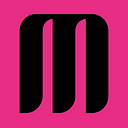Mophie Powerstation With PD REVIEW | MacSources
Fast, portable power designed with Apple devices in mind.
It never hurts to be prepared for extenuating circumstances when you leave the house. For me, that means having an alternative power source for my essential devices (i.e. iPhone, iPad, AirPods, etc.). The problem I often run into is finding a power bank that is powerful enough to charge those devices, but also compact enough to carry around — in my pocket if necessary. For years now, mophie has been my go-to company for portable batteries. So, when I started looking for a powerful portable battery with a small form factor that would work with my Apple devices, mophie was naturally the first place I turned. That’s how I got paired with the Powerstation with PD, a portable battery with USB-C fast charge.
DETAIL & SPECS
The Powerstation with PD is a fast-charging power bank. It’s designed to work with iPhone 11 Pro Max, iPhone 11 Pro, iPhone 11, iPhone Xs Max, iPhone Xs, iPhone XR, iPhone X, USB-C Devices, and USB-A Devices. It’s available in four different colors — black, gray, navy blue, and light pink. The battery has a capacity of 6000 mAh and provides 18W of PD through the USB-C port. The battery recharges using the Apple Lightning Port so that there is no need for a second cable. With the Powerstation you have the option to charge multiple devices using the USB-C and USB-A ports (the Lightning port is for input charging only). Mophie gives the Powerstation a stylish look and feel by covering the power bank with a premium fabric finish. The battery only comes with a quick start guide (a full manual is available for download). There are no cables included in the box with the battery.
Tech Specs
- Warranty: 2-year warranty
- Weight: 0.3350 lb
- Capacity: 6000 mAh
- Dimensions: 2.68 in x 5.12 in x 0.47 in
USER IMPRESSIONS
My first impressions of the battery were very good overall. Mophie always does a nice job with their packaging (lots of good information, clear image of the product on the front of the box, etc.) so I knew exactly what to expect when I opened the box. I was, however, surprised to find that there were no cables included with the batter. Usually, there is at least a charging cable included. I suppose it’s possible that since this power bank charges with Lightning (for consumer convenience) and I’ve never seen a Mophie-branded Lightning cable — that might be the reason why. With that in mind, I would have to say that the box is a little on the large side for just holding the battery and a quick start guide.
As far as how the battery feels — it actually feels like a small smartphone. It’s comfortable to hold in the hands and because it’s actually smaller than my iPhone 11 Pro Max and the iPhone 11 Pro, it’s very easy to carry around. You do have to press/hold the power button for 3 seconds to enable the charging function on the battery, but other than that, there are no other hidden actions that need to be completed to use the battery. The USB-C port can be used for output or input charging.
The Powerstation does have a 4-LED power indicator on the side next to the power button. To view the battery status, simply press the power button once. The LEDs will flash through all four at first and then back down to the current battery level. When I took the battery out of the box, it was only showing 1 LED. The box does not indicate that the battery comes pre-charged, but I’m used to most power banks having at least 50% power out of the box. I plugged the battery in to charge for a while before testing the charging rate. Using a Lightning cable, it took a few hours to charge the battery to 100%.
To test the charging rate, I opted to use an iPhone 11 Pro. The battery capacity of an iPhone 11 Pro is 3,190 mAh. When I began this charging test, the battery of the iPhone was at 67%. First, I plugged the phone in using a Lightning to USB-A cable. I let the phone charge for 10 minutes and then switched to a Lightning to USB-C cable for charging. After 10 minutes of charging that way, I looked at the results. The charging rate for the Lightning to USB-A cable was 0.9% per minute and the charging rate for the Lightning to USB-C cable was 0.7% per minute. I was surprised to find the charging rate was that much slower using the USB-C cable, but it was still a respectable charging rate.
FINAL THOUGHTS
I’ve been a fan of Mophie products for a long time and this powerful little battery is a welcome addition to my growing collection of power stations. I do wish that Mophie had included a cable for charging since the power bank can charge using USB-C or Lightning. At around $60 USD, it’s a good option for a compact, high-capacity battery that can charge multiple devices.
For more information, visit zagg.com, Facebook, and Twitter.
Originally published at https://macsources.com on March 16, 2020.
